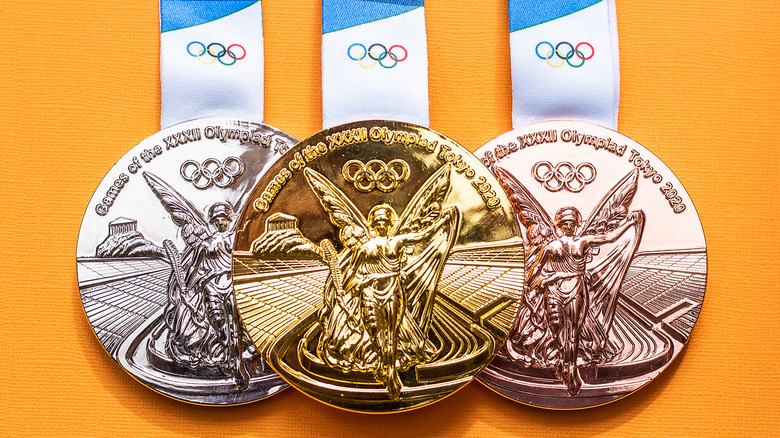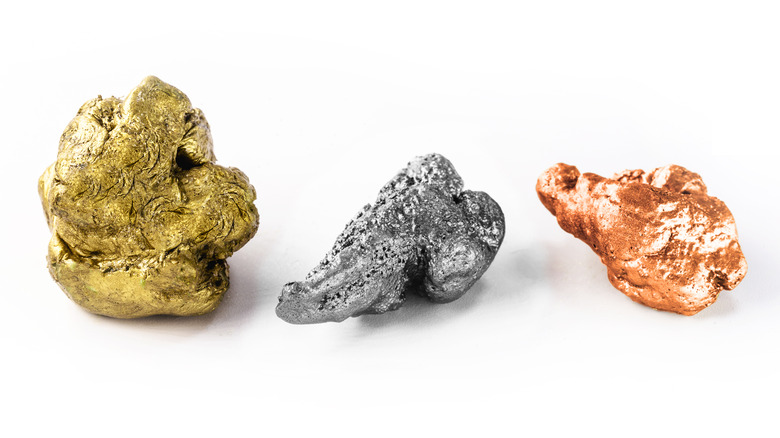Here's What The 2020 Olympic Medals Are Actually Made Of
There are few things more celebrated, more desirable in the world to an athlete than earning a medal at the Olympics. Whether gold, silver, or bronze, it's an achievement that only a select number of people ever accomplish. But the medals in the 2020 Tokyo Olympics have a special twist to them. As part of the committee's commitment to sustainability, and trying to accomplish as environmentally-friendly an Olympics as possible, each of the medals are made from precious metals salvaged from used electronic devices.
Through the Tokyo 2020 Medal Project, the organizers of the Games solicited donations of used electronic equipment from citizens all over Japan, making it, as they note on their site, the first time in the history of the Olympic and Paralympic Games that a host country has enlisted the assistance of their own people in the creation and manufacture of the medals.
The project began in April 2017 and ran for two years, with the announcement for the end of the collection process noting it ended on March 31, 2019, and was a rousing success. Over 78,985 tons of small electronic devices were collected via 1,621 municipalities throughout Japan, along with an additional 6.21 million used cell phones by predominant mobile phone operator NTT Docomo. An astounding 90% of the "wards/cities/towns/villages" in the country participated.
The salvaged materials were enough to produce all the medals
The Tokyo 2020 Medal Project reported they collected enough electronics to salvage approximately 32 kilograms of gold, 3,500 kilograms of silver and 2,200 kilograms of bronze, which they noted was enough collected to create 100% of the 5,000 medals.
Once the electronics were collected, they were dismantled, and then the metals were extracted using a process called smelting, which Science Direct states involves heat and chemicals to melt down the elements to their base form, removing any impurities.
It's not just electronics in Japan that contain these precious metals. The BBC reports that all smartphones contain some, and that along with the three materials salvaged for the Olympics, some also contain copper, aluminum, platinum, and/or palladium. Because few phones actually get recycled and broken back down to their rare elements, a lot of these previously mined materials go to waste. As scientist and Professor Jason Love at the University of Edinburgh told VOA News, "Something like 7% of gold that's used in the world at the moment is found in waste electronics."
However, a cottage industry has sprung up in Japan called "Urban Miners," Reuters reports, where recycling companies extract these metals. As an island nation with limited natural resources, it makes sense for them to reuse as much material as possible. As Eco-Systems recycling plant manager Nozomu Yamanaka told Reuters, "To some it's just a mountain of garbage, but for others, it's a gold mine." And it seems the Tokyo Olympic committee agrees.

